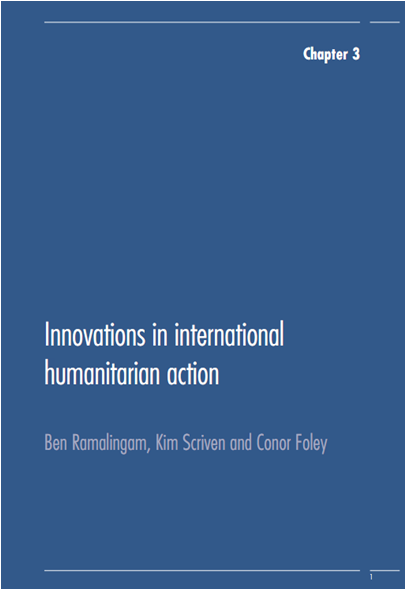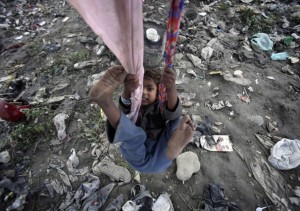 I recently attended a presentation organized by USAID’s Bureau of Global Health entitled “Creating meaningful products, services, and experiences in social marketing” by Robert Fabricant of frog Design. Frog Design is a global innovation firm that works with the world’s leading companies, helping them to design, engineer, and bring to market meaningful products and services. Robert Fabricant is the Vice President of Creative for frog design where he works with a global team of strategists, interaction designers, industrial designers, technologists and design researchers. He is charged with helping to extend frog’s capabilities into new markets and offerings in areas like healthcare and transportation. He spoke about frog’s evolving approach to leveraging social media to drive behavior change, drawing upon frog’s experience in the USA and South Africa using case studies to illustrate frog process across the following stages of design.
I recently attended a presentation organized by USAID’s Bureau of Global Health entitled “Creating meaningful products, services, and experiences in social marketing” by Robert Fabricant of frog Design. Frog Design is a global innovation firm that works with the world’s leading companies, helping them to design, engineer, and bring to market meaningful products and services. Robert Fabricant is the Vice President of Creative for frog design where he works with a global team of strategists, interaction designers, industrial designers, technologists and design researchers. He is charged with helping to extend frog’s capabilities into new markets and offerings in areas like healthcare and transportation. He spoke about frog’s evolving approach to leveraging social media to drive behavior change, drawing upon frog’s experience in the USA and South Africa using case studies to illustrate frog process across the following stages of design.
In the presentation yesterday Robert referred to frog’s partnership with UNICEF’s Innovation Group. As the audience really, mainly USAID staff, enjoyed Robert’s presentation I thought I would try and find a bit more info on frog’s partnership with UNICEF to share. This is a good read. Good ideas are better when shared. enjoy!
________________________________________________________________________________
The article below was published here by frog Design on their Design Mind blog. The Design Mind blog is written by frog designers, technologists, and strategists and provides the design and innovation community with perspectives on industry trends, emerging technologies, and global consumer culture.
By: Jaleen Francois –
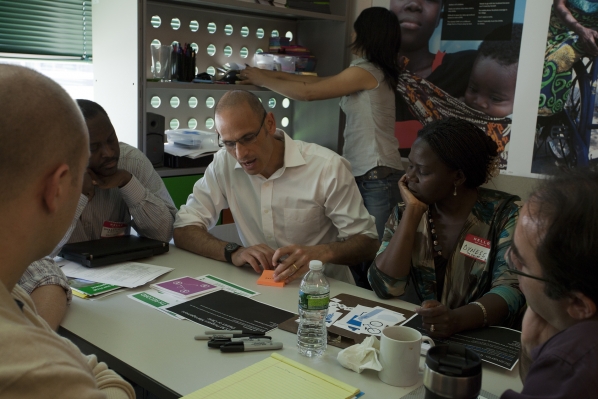 As part of our Mobile Mandate initiative, frog hosted a two-day gathering that brought together key stakeholders across UNICEF and its partners to look at how mobile technology for development can help deliver, monitor and mange results for the world’s most disadvantaged children. The first-day workshop was concentrated on Community Case Management, an emerging healthcare model that enlists a new tier of healthcare provider—the Community Health Worker—to provide basic services to rural communities. How can we find ways to integrate mobile technologies, remarkably and increasingly more available in rural Africa, into these programs so that they improve Community Healthcare Workers’ abilities to offer care, and simultaneously allow better data tracking, supply distribution, and general program management?
As part of our Mobile Mandate initiative, frog hosted a two-day gathering that brought together key stakeholders across UNICEF and its partners to look at how mobile technology for development can help deliver, monitor and mange results for the world’s most disadvantaged children. The first-day workshop was concentrated on Community Case Management, an emerging healthcare model that enlists a new tier of healthcare provider—the Community Health Worker—to provide basic services to rural communities. How can we find ways to integrate mobile technologies, remarkably and increasingly more available in rural Africa, into these programs so that they improve Community Healthcare Workers’ abilities to offer care, and simultaneously allow better data tracking, supply distribution, and general program management?
We spent the second day expanding our look at mobile possibilities elsewhere in UNICEF’s programming. How might this technology change programs for Water and Sanitation, Child Protection, or Nutrition? We assembled a room full of experts from UNICEF Headquarters, program directors from UNICEF country offices, and mobile health experts from around the country, pushed up our sleeves, and dug in.
For any program that we looked at from Community Case Management to Hand Washing to Water Pump Safety, the question is never about the technology, or even the system—it is about the people. We sketched out scenarios that people encounter: The community health worker meets a mother with an ill infant. What is the first thing she must do? What does she say? How does the mother feel after the interaction? What obstacles does the mother still face? A district hospital manager needs to order supplies for five clinics and the Community Health Workers they oversee. How does she know how much to order? How does she know if the supplies arrived? How does she know if they are being used? Only once we understood the various goals that these users have and the challenges they face, did we start to create concepts to inject mobile technology. Even then, we kept a close eye on what it might mean to the users—people will only be motivated to use tools that make their jobs easier or more successful. What are the incentives for the Community Health Workers, or water pump monitors, or local village residents to use mobile systems?
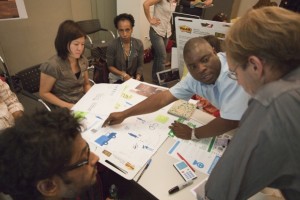 Spoiler alert: we didn’t answer all these questions in our two-day workshop. But we did emerge with a deeper understanding of the problem, the players, and the possibilities. Over the next few weeks, frog will synthesize the outputs of the workshop into a playbook of concepts and principles that UNICEF can take to inform mobile-supported programs throughout the organization. Here’s a preview of some top-level guidelines we made to this group, but can be applied to any organization looking to leverage mobile technology for service programming:
Spoiler alert: we didn’t answer all these questions in our two-day workshop. But we did emerge with a deeper understanding of the problem, the players, and the possibilities. Over the next few weeks, frog will synthesize the outputs of the workshop into a playbook of concepts and principles that UNICEF can take to inform mobile-supported programs throughout the organization. Here’s a preview of some top-level guidelines we made to this group, but can be applied to any organization looking to leverage mobile technology for service programming:
1. When building scenarios and systems, choose the interactions that are ripe for mobile and that will also deliver the most bang for the buck. Mobile is not a panacea—it has big benefits for some interactions, but in some cases analog might actually still be best.
2. Designing for people and their everyday interactions assures that you will uncover and solve for the right problems and you will design a system that has value for the people who use it.
3. Create effective communications in and across your organization. Rather than forcing hierarchical, linear chains of communications, look for overlaps in data that can be distilled for different points in the system. As mobile can generate real-time data as it’s used, it can allow for more efficient and more broadly networked information and communications.
4. Design for the users, not just the technology. Technology changes every couple of months, while the healthcare industry takes longer to adapt. When you’re designing for mobile, you have to remember that by the time you design a system, features or capabilities might have already changed in the market.
5. If you pull knowledge from a community, you should generate helpful feedback to that same community. Reciprocity is great incentive, and mobile is great at delivering this.
6. Design for scale from very beginning.. Think about creating solutions that can be used elsewhere, can grow with technology, and can take on more participants. In other words, don’t design yourself into a corner. Similarly, keep an eye for solutions created in one domain or part of the organization that can be transferred to another within the organization.
7. Private sector partners are great, but consider their incentives to invest. What is there to gain in the health domain? Who might be the most effective private partner?
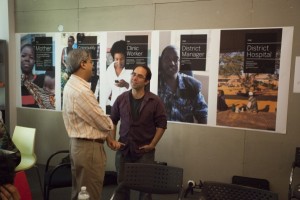
 No matter what happened at this year’s MIT $100K Entrepreneurship Competition, David Auerbach said his team was determined to give Sanergy a go. After capturing the crowd with the quip, “Join us as we turn shit into gold,” the team won the competition, and five months later, they’ve found themselves with another $100,000 grant, this time from USAID’s Development Innovation Ventures.
No matter what happened at this year’s MIT $100K Entrepreneurship Competition, David Auerbach said his team was determined to give Sanergy a go. After capturing the crowd with the quip, “Join us as we turn shit into gold,” the team won the competition, and five months later, they’ve found themselves with another $100,000 grant, this time from USAID’s Development Innovation Ventures. This post was originally published on
This post was originally published on 